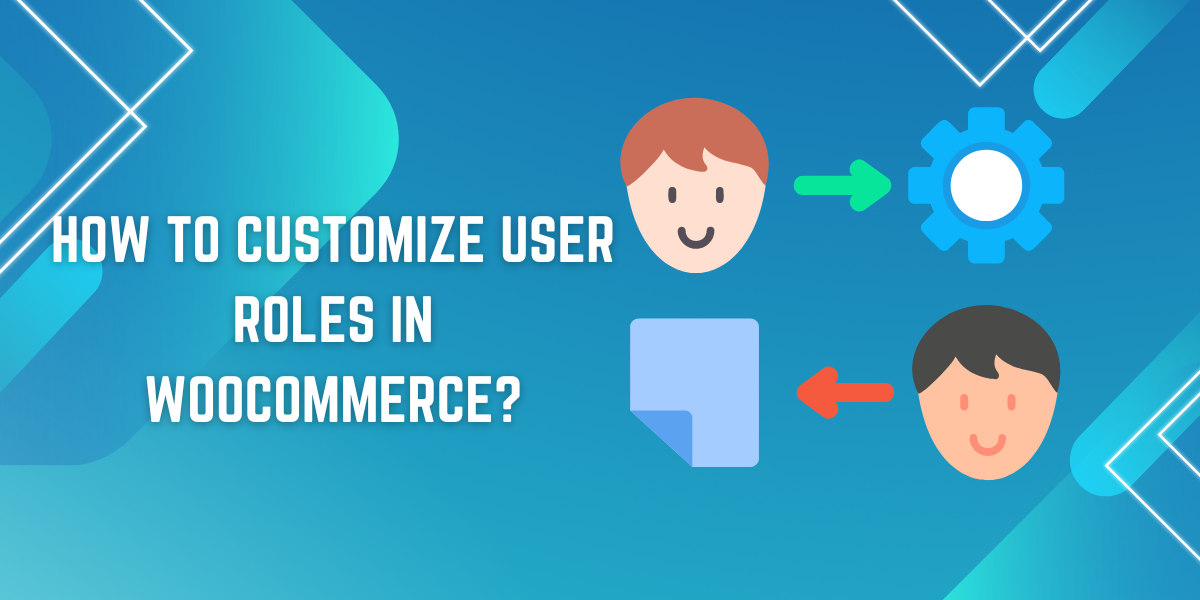User roles are like different labels that show what kind of action a person can perform in an e-commerce store. They define the level of access and permissions granted to users interacting with WooCommerce. These roles will control the capabilities and responsibilities within the store’s ecosystem.
The basic ones are set by default and include roles like Administrator, Shop Manager, Customer, and Subscriber.
But why bother customizing them?
Customizing these roles can make everything smoother and safer inside your store.
For example, if you have a team, you can give each person just the tools they need to do their job. This way, you reduce the chances of someone messing with things they shouldn’t.
Furthermore, when you tweak WooCommerce user roles, you’re making your store work better for your business style. You can match them to how your business works, making tasks easier and decisions clearer.
Therefore, we will discuss how to customize these user roles in e-commerce.
Keep reading and let’s discuss.
Manual Method to Customize User Roles
The first thing we need to discuss is how to customize the user roles using the old-fashioned way of doing it manually. You can do it by digging into your website code.
First up, you’ll need to find a file called functions.php in your theme. This file is like a backstage pass to your website’s inner functionalities.
Once you’re in there, you can start adding your lines of code to customize user roles. It’s like adding special instructions to your website.
Secondly, You can insert the custom PHP code snippets that define the changes you want to make to the user roles. This could involve using functions like add_role() to create new roles, add_cap() to add capabilities to existing roles , or remove_cap() to remove capabilities from roles.
It gives someone a new power or restricts them about what they can do. You can do that with code. After doing it, you can check and make sure everything is doing fine and hit the save button to save the changes.
Customizing these roles via PHP code might sound a bit tricky. However, with a little patience and testing, you can make your website work exactly how you want it to.
Customizing User Roles Via Plugin:
The second and easiest method to customize user roles is using a plugin to do it. It allows you to automatically assign and switch user roles based on specific conditions. You can assign a user group to new customers instead of admins performing large & complicated tasks.
With this plugin, you can easily tweak user roles without messing around with complicated code. It gives you special access to certain parts of your store.
Let’s see what features make it unique to cover it:
- Easily assign roles to new users joining your WooCommerce store
- Automate the process of switching user roles based on specific criteria
- Efficiently manage user roles with multiple rules, ensuring seamless organization
- Set customized criteria for role-switching and role assignment, including:
- Specific product purchases
- Purchases from particular product categories
- Orders exceeding a defined price range
- Total purchase amounts within specified ranges
- Schedule user role changes in advance for streamlined management
- Revoke assigned roles and provide custom explanations for the changes
- Receive email notifications whenever user roles shift, keeping you informed
- Exclude certain user roles from the rule application as needed.
- Access comprehensive role-change history for both users and administrators
- Ensure compatibility with the Shop as a Customer for WooCommerce plugin for enhanced functionality
Best Practices for Customizing User Roles:
When it comes to customizing user roles in WooCommerce, it requires finesse and strategy.Here’s a curated list of best practices to ensure seamless management and optimization:
- Regularly review and update customized user roles
- Document all customizations for future reference
- Test changes on a staging site before implementing
- Backup your site before making modifications
- Seek professional assistance if needed
- Ensure compatibility with plugins and themes
- Communicate changes to relevant stakeholders
- Monitor user role activity for anomalies
- Educate team members on role responsibilities
- Stay informed about best practices and updates
Advantages of the Plugin method over the Manual Method:
When it comes to customizing user roles in WooCommerce, using a plugin offers various advantages over manual methods. Here’s a rundown of the key benefits:
- Plugins streamline the customization process, saving time and effort
- User-friendly interfaces make plugin usage accessible to non-technical users
- Plugins offer a wide range of customization options to meet specific needs
- Automated tasks like role assignments reduce the need for manual intervention
- Plugins integrate seamlessly with WooCommerce and other WordPress plugins
- Built-in security measures and regular updates ensure website safety
- Plugins scale effectively to manage a growing number of user roles.
- Dedicated support channels and documentation assist
- While some plugins have a cost, the benefits often outweigh the investment
- Many plugins offer features for tracking user role changes and activities
Final Words:
In conclusion, getting a handle on User Roles in WooCommerce is super important for making sure your online shop runs smoothly and stays safe.
By customizing user roles, you can make sure everyone who uses your store whether they are customers or part of your team—gets the right access to the stuff they need.
Whether you’re using plugins or doing it yourself, the main thing is to keep an eye on things and update user roles when needed.
Don’t forget to write down what changes you make and test them out before you put them into action.
With a bit of careful planning, you can use user roles to make your WooCommerce store work like a charm for everyone involved.
